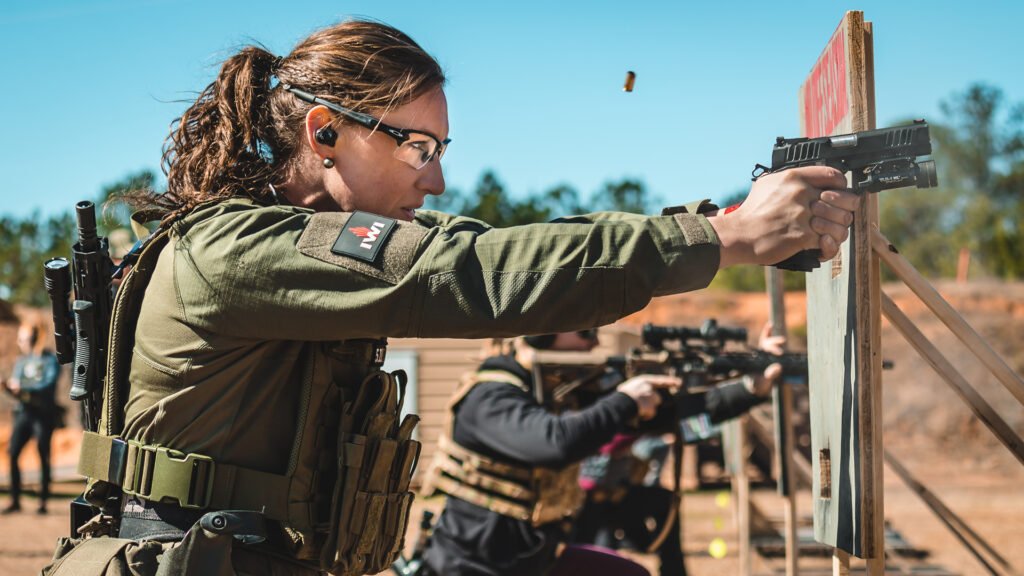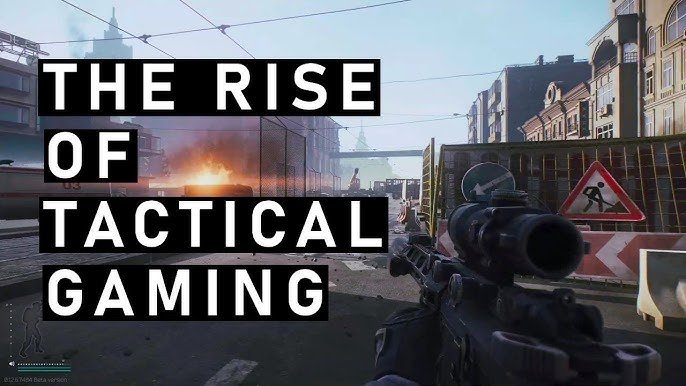Introduction
Tactical shooter games have gained significant traction in the gaming community, offering a blend of precision, strategy, and teamwork. Unlike traditional shooters that emphasize fast-paced action, tactical shooters focus on deliberate planning and strategic execution. This article explores the rise of tactical shooter games, highlighting their unique features, key examples, and the reasons behind their growing popularity
While mastering tactical shooters requires precision and strategy, sometimes you need to switch gears for pure entertainment. For those moments, the team behind UnderAsh occasionally explores other high-stakes gaming environments.
We recently came across JokaVIProom Official, which offers a different kind of strategic gameplay for those interested in premium online experiences.
Just remember to apply the same disciplined approach to all your gaming sessions.

Defining Tactical Shooters
Tactical shooter games are characterized by their emphasis on strategy, teamwork, and careful planning. These games often involve slower-paced gameplay compared to more fast-paced shooters, requiring players to make thoughtful decisions and coordinate with teammates. The primary goal is not just to eliminate opponents but to achieve specific objectives through strategic play.
Core Elements of Tactical Shooters
- Strategic Gameplay: Tactical shooters require players to devise and execute strategies to achieve objectives. This might involve planning attacks, setting up defensive positions, or coordinating with teammates to achieve mission goals.
- Team Coordination: Teamwork is crucial in tactical shooters. Players must communicate effectively and work together to succeed. Roles and responsibilities are often assigned to ensure that each team member contributes to the overall strategy.
- Realistic Mechanics: Many tactical shooters prioritize realistic mechanics, including weapon handling, movement, and damage systems. This realism adds depth to the gameplay and requires players to adapt to the game’s environment.
- Objective-Based Play: Instead of simply focusing on eliminating opponents, tactical shooters often include objectives that players must complete. These objectives can range from capturing points to defusing bombs, adding layers of strategy to the gameplay.
As tactical shooters evolve with complex team dynamics, players increasingly seek communities that match their competitive standards. The Jokaviproom VIP Club offers an exclusive environment for dedicated gamers to connect and strategize. Much like coordinating in high-stakes matches, this platform emphasizes precision and elite collaboration. For those mastering games featured on Under Ash, such dedicated spaces enhance both skills and camaraderie. Engaging with like-minded professionals can elevate your tactical approach significantly. Discover how focused communities are shaping modern gaming experiences. Embrace the strategic edge in every mission you undertake.
Popular Tactical Shooter Games
Several games have defined the tactical shooter genre, each bringing unique elements and innovations:
- Rainbow Six Siege (2015): Rainbow Six Siege is a standout in the tactical shooter genre, known for its emphasis on team-based gameplay and destructible environments. Players choose from a variety of operators with unique gadgets and abilities, adding strategic depth to each match. The game’s tactical approach and focus on coordination have made it a favorite among competitive players.
- Counter-Strike: Global Offensive (2012): CShas long been a staple in the tactical shooter scene, offering precise gunplay and strategic depth. The game’s objective-based gameplay and competitive nature have cemented its place in the esports world. Its blend of tactics and skill-based shooting continues to attract players seeking a challenging experience.
- Arma 3 (2013): Arma 3 is known for its realistic military simulation and expansive environments. The game’s emphasis on tactical planning and large-scale battles provides a deep and immersive experience. Players can engage in detailed missions and operations, making it a go-to title for fans of military simulations.
- Escape from Tarkov (2016): Escape from Tarkov combines survival mechanics with tactical shooting, creating a unique and intense experience. The game’s focus on realism, resource management, and strategic play sets it apart from other tactical shooters. Its challenging gameplay and detailed progression system appeal to players looking for a more immersive experience.
The Appeal of Tactical Shooters
The rise of tactical shooters can be attributed to several factors:
- Strategic Depth: Tactical shooters offer a level of strategic depth that appeals to players who enjoy planning and executing complex strategies. The need for careful consideration and coordination adds layers of engagement to the gameplay.
- Teamwork and Communication: The emphasis on teamwork and communication fosters a sense of camaraderie among players. Successful coordination and collaboration enhance the overall experience, making tactical shooters popular in both casual and competitive settings.
- Realism and Immersion: Many tactical shooters prioritize realistic mechanics and environments, creating immersive experiences that resonate with players seeking authenticity. The focus on realistic weapon handling and environmental interactions adds to the game’s depth.
- Competitive Play: Tactical shooters often feature competitive modes and leagues, providing players with opportunities to test their skills and strategies against others. The competitive aspect drives engagement and contributes to the genre’s popularity.
The Future of Tactical Shooters
As the genre continues to evolve, tactical shooters are likely to see further innovations in gameplay mechanics, graphics, and team dynamics. Advances in technology, such as virtual reality and AI, may enhance the realism and immersion of tactical shooters, offering new experiences for players. The genre’s focus on precision, strategy, and teamwork will likely continue to attract a dedicated player base.
Conclusion
The rise of tactical shooter games reflects a growing interest in precision, strategy, and teamwork in the gaming community. By emphasizing strategic depth, realistic mechanics, and cooperative play, these games offer a unique and engaging experience. As the genre evolves, tactical shooters will continue to push the boundaries of gameplay, providing players with challenging and immersive experiences.

